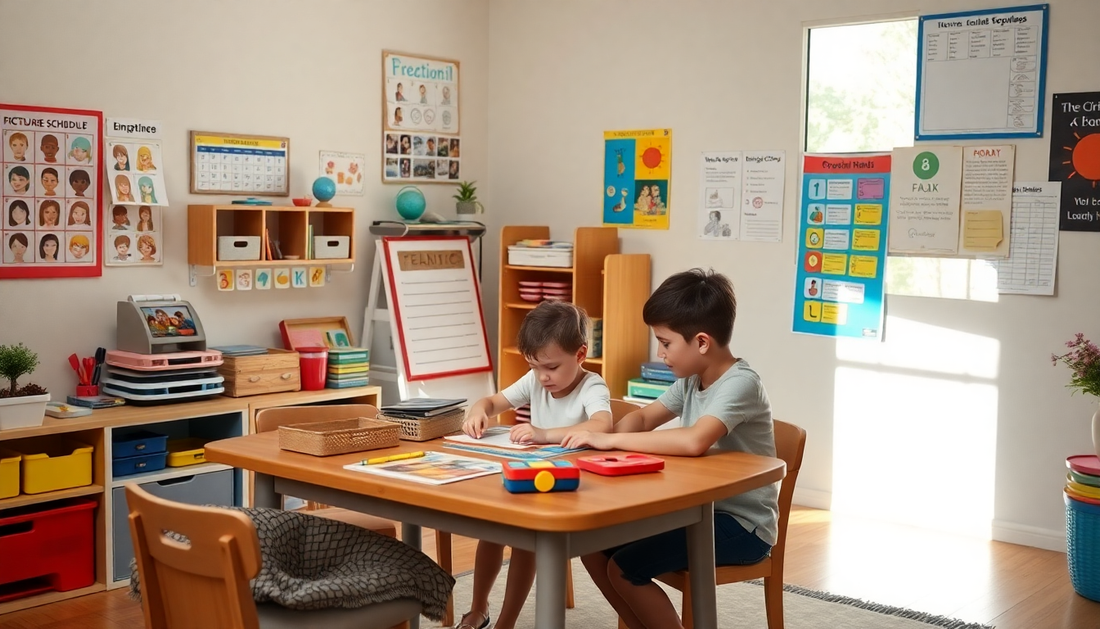
10 Effective Visual Learning Strategies for Teaching Your Autistic Child at Home
Share
As a parent of an autistic child, you know that traditional teaching methods don't always work for your little one. Autistic children often thrive with visual learning strategies that cater to their unique cognitive strengths. Whether you're homeschooling or supplementing your child's education, incorporating these 10 effective visual learning techniques can make a world of difference.
Embrace Visual Schedules
Predictability and structure are essential for many autistic learners. Create a visual schedule that outlines your child's daily routine using pictures, icons, or written words. This helps them anticipate transitions and feel more in control of their environment. You can even laminate the schedule and use Velcro or magnets to move the activities as you progress through the day.
Utilize Graphic Organizers
Graphic organizers are powerful tools for visual learners. They help your child make connections, organize information, and see the big picture. Try using mind maps, timelines, Venn diagrams, or flow charts to explore new concepts. These visual aids can be especially helpful for subjects like history, science, or language arts.
Incorporate Visual Timers
Many autistic children struggle with the passage of time and may become anxious or overwhelmed when activities are open-ended. Use a visual timer, like a sand timer or a Time Timer, to provide a clear, visual representation of how much time is left for a task. This can help your child transition more smoothly and stay on track.
Leverage Visual Aids
Supplement your lessons with a variety of visual aids, such as:
- Real-world objects or models
- Photographs
- Illustrations
- Diagrams
- Videos
- Presentations with visuals
These concrete, visual representations can make abstract concepts more tangible and easier to understand for your autistic learner.
Create Visual Checklists
Checklists are a great way to break down multi-step tasks into manageable, visual steps. Whether it's getting dressed, brushing teeth, or completing a homework assignment, a visual checklist can help your child stay focused and on task. You can even have them check off or move items as they complete each step.
Encourage Drawing and Doodling
Many autistic children are visual thinkers and excel at drawing or doodling. Encourage your child to illustrate their ideas, take notes, or express their thoughts through art. This can help them process information, retain concepts, and communicate their understanding in a way that plays to their strengths.
Utilize Color Coding
Color coding can be a powerful organizational tool for visual learners. Use different colored folders, binders, or highlighters to categorize information, sort tasks, or distinguish between subjects. This can help your child quickly identify and access the materials they need.
Incorporate Sensory Experiences
Engaging multiple senses can enhance the learning experience for autistic children. Incorporate hands-on, sensory-rich activities, such as:
- Tactile manipulatives (e.g., blocks, puzzles, clay)
- Kinesthetic movements (e.g., acting out concepts, tracing letters)
- Multisensory learning tools (e.g., sandpaper letters, textured shapes)
These sensory experiences can help cement new information and make learning more engaging.
Leverage Technology
Embrace the power of technology to support your autistic child's visual learning needs. Utilize educational apps, interactive websites, or assistive technology, such as:
- Text-to-speech or speech-to-text software
- Visual scheduling apps
- Digital graphic organizers
- Educational videos or animations
These technological tools can provide a more immersive and personalized learning experience.
Create a Visual-Rich Environment
Curate your child's learning space to be visually stimulating and organized. Hang posters, display artwork, or create a visual word wall to reinforce key concepts. Ensure that materials are easily accessible and labeled with clear visual cues. A visually engaging environment can help your child stay focused and inspired.
Remember, every autistic child is unique, so it's important to experiment with different visual learning strategies and find what works best for your little one. By incorporating these techniques into your homeschooling or supplemental learning, you can empower your child to thrive and reach their full potential.
